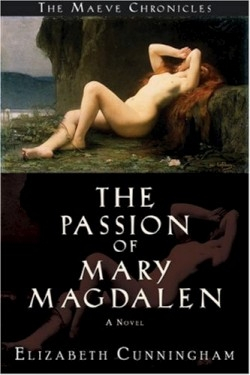The Passion of Mary Magdalen
A Novel
- 2006 INDIES Finalist
- Finalist, Religious (Adult Fiction)
The life of Jesus, and even some of the apostles, has been richly imagined through fiction and film, from The Da Vinci Code to The Last Temptation of Christ and Passion of the Christ. Although the role of Mary Magdalen is occasionally prominent, particularly in Dan Brown’s wildly popular novel and Martin Scorsese’s movie, she isn’t a central enough character to garner any exploration of her origins or motivations. She usually springs, Aphrodite-like, wholly formed from the foamy musings of writers and filmmakers.
This epic, stunningly original work, in re-imagining a Magdalen of complexity, strength, and yearning is partly the counterbalance to our culture’s tendency to imbue Jesus with a host of characteristics and yet leave the Magdalen a two-dimensional, barely understood woman at his side. Partly, though, Cunningham’s novel is simply a roaring good read.
The author of The Return of the Goddess, Daughter of the Shining Isles, and The Wild Mother,—all stocked with characters that rival the mythic Amazons—Cunningham brings a unique perspective to her novels, and is well-suited to pen the Magdalen story. Coming from nine generations of Episcopal priests, she followed the family calling and became a minister herself, specializing in counseling and interfaith issues.
It’s not difficult to draw parallels to Cunningham’s deep family legacy of spirituality and the origins of her Magdalen. Born on a Celtic island, this Magdalen is no lone figure who suddenly steps into a prophet’s camp. Rather, she’s the daughter to eight “warrior-witch mothers” whose bones and teeth grew strong early from the milk of these dynamic, formidable women.
In modern parlance, she’s a kickass, taking-names rebel who frequently gets in trouble for saying precisely what she’s thinking and being unapologetic about it. This Magdalen, though she would eventually weep at the feet of Jesus, is hewn from stern stuff indeed.
In telling Magdalen’s tale, Cunningham attempts to mix modern speech, slightly antiquated Latin-inspired phrases, and an occasional contemporary reference. Often, she slips into the second-person voice, as if she’s telling the story directly to the reader. The result is sometimes jarring, as when she’s describing a Roman street with its garishly painted statues and frescos, and attempts to convey the difference between how readers may picture Rome and how it truly was: “You may be accustomed to thinking of the ancient world as full of white columns and torsos missing arms and busts with chipped noses,” she writes. “That’s only because the paint doesn’t last. Think Las Vegas and you’ll be closer to the Rome of my day.”
Despite this modest difficulty, her tendency to make Magdalen speak to the reader more often invokes a kind of intimacy, as if the reader alone were hearing this unbelievable tale of love, loss, and longing. She’s reaching through the ages to detail her sojourn on the mortal plain, and what a life it was: after rescuing young Esus from sacrifice, she goes in search of him and is captured by a slave trader. Sold to a brothel, where her hair color earns her the nickname “Red,” she loses none of her fiery nature or secret longing to find Esus as she journeys from prostitution to working as a Roman house slave to becoming a temple priestess of Isis.
When she is eventually reunited with her love, now known as Jesus, she is made whole at last, and her devotion to him, and his to her, is a multi-layered love of mutual understanding and respect. Magdalen was not a woman forgiven her trespasses, a whore made holy, but rather a partner to Jesus in a relationship marked by deep affection, true passion, and even a few arguments. Biblical references aside, Cunningham creates a rich, detailed ancient world, but at its center are two timeless figures whose story is known to anyone who’s loved and, especially, lost.
When Jesus is crucified, his suffering is seen through the Magdalen, and the experience is nearly unbearable: “Then my beloved cried aloud, and I was there on the cross with him. I became him. I became pain so absolute that whose it was seemed meaningless. … My prayer became heartbeat, breath, a tiny coracle moon resting in a sky of pain, drifting on a sea of pain, and I rode it on and on.”
Although the connection between Magdalen and Jesus is particularly compelling, also notable is Cunningham’s adroit interpretation of Biblical text, as she takes stories from the Bible and imagines them as they happened, with yelling, laughter, dust, and conflict. Through Magdalen’s eyes, spiritual growth becomes familiar, and the familiar becomes dazzling.
Reviewed by
Elizabeth Millard
Disclosure: This article is not an endorsement, but a review. The publisher of this book provided free copies of the book to have their book reviewed by a professional reviewer. No fee was paid by the publisher for this review. Foreword Reviews only recommends books that we love. Foreword Magazine, Inc. is disclosing this in accordance with the Federal Trade Commission’s 16 CFR, Part 255.

